Essential Baking Ingredients for Cake, Cookies, Breads, and More
These are the essentials no pastry chef can do without, and a few of the most versatile "extras" we find ourselves reaching for most often.
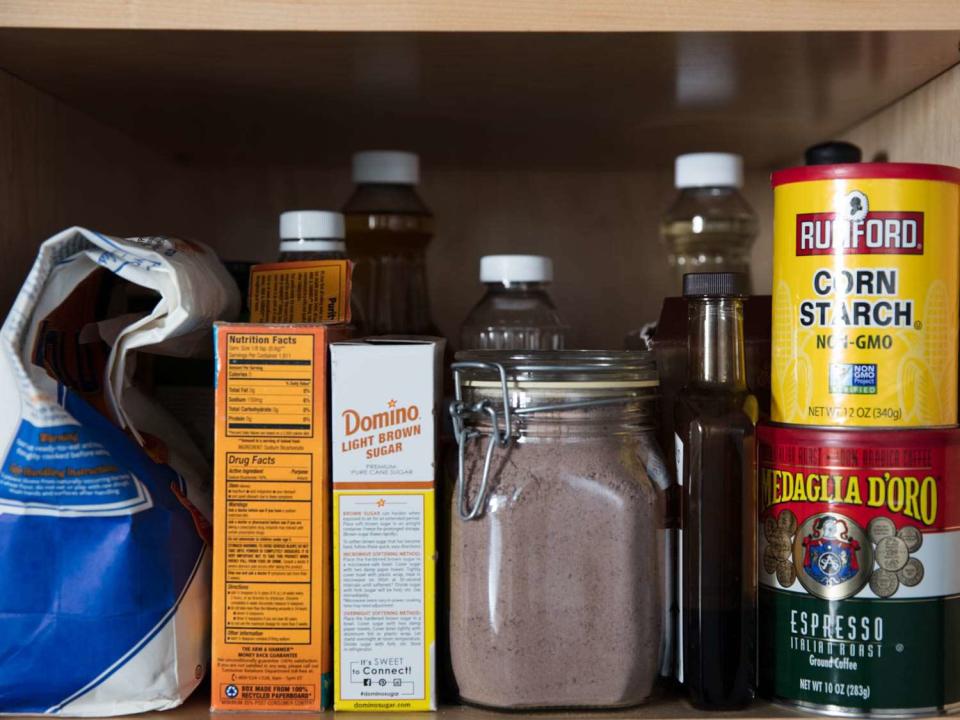
Serious Eats / Vicky Wasik
Aside from fresh fruit, dairy, and eggs, the pantry is where you'll find a baker's true arsenal—the shelf-stable building blocks of dessert. This list includes the ingredients I reach for most often, so it isn't an exhaustive representation of everything I keep on hand. Rather, it's a working inventory that's meant to cover the broadest number of our recipes here on Serious Eats, without getting into the special ingredients needed for more unusual projects (like the Belgian brown sugar used in my homemade Biscoff, or the potato flour in my pumpkin spice cake).
Baking Soda
I’ve written in depth about the science of baking soda, one of the most common chemical leavening agents used to help cakes and cookies rise. Baking soda reacts with acidic ingredients to produce carbon dioxide, a gas that works to expand the existing air cells in a batter or dough.
Due to its alkalinity, baking soda can also be used to deepen flavors or neutralize unwanted acidity, even when no leavening is required. I use it to that effect in my favorite gingersnap cookies, as well as Carr’s-style Ginger Lemon Cremes.
I typically buy baking soda in bulk because I also avail myself of many of its nonculinary functions, and no, it doesn't go bad. Or, at least, it will be visually apparent (in the form of pills and lumps) that something has gone horribly wrong if such an unlikely thing should occur.
Arm & Hammer Baking Soda
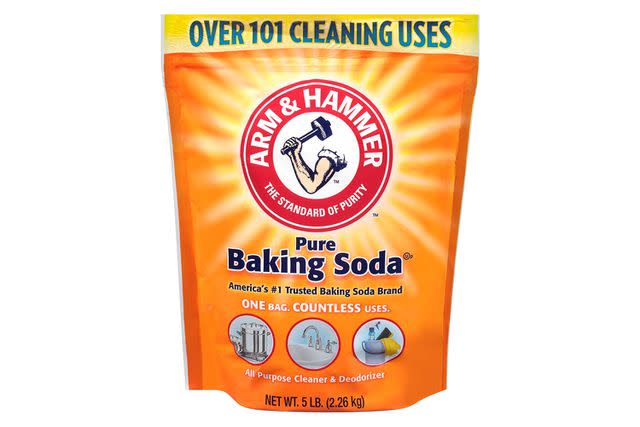
Baking Powder
Like baking soda, the science of baking powder is a subject I’ve covered extensively in the past. In short, double-acting baking powder works in two ways: with a moisture-activated acid that releases carbon dioxide to seed a room-temperature batter or dough with tiny bubbles of gas, and with a heat-activated acid that releases a second wave of CO2 to expand those air cells more fully in a hot oven.
That one-two punch is essential in making light and fluffy vanilla butter cake, cookies, and scones. Because baking powder won’t neutralize the existing acidity in a dough, it’s useful for preserving the delicious zip of acidic ingredients, as with the tang of buttermilk or yogurt in homemade biscuits.
I use a number of different brands at home, most often Calumet and Clabber Girl. It's worth noting that new aluminum-free brands can produce discoloration in fruit-based desserts, like blackberry or strawberry cake.
Clabber Girl Baking Powder, 8.1 oz
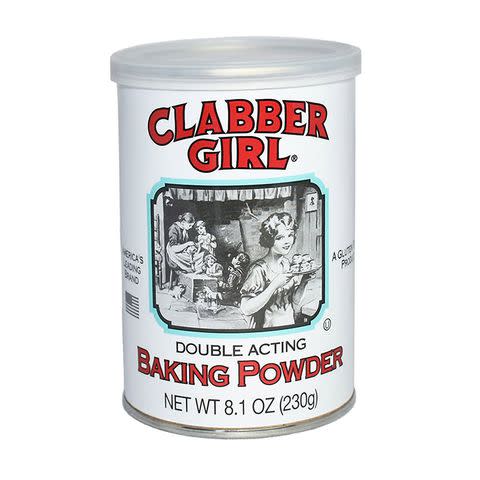
Chocolate
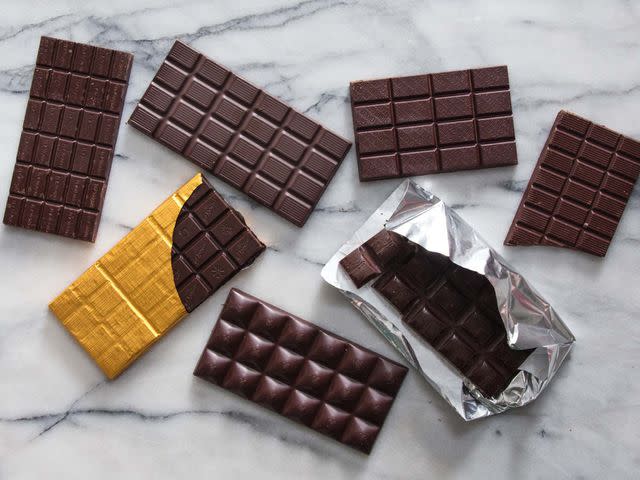
Serious Eats / Vicky Wasik
I always have an assortment of chocolate bars on hand, whether to whip up a batch of old-fashioned chocolate chip cookies or chocolate-covered digestive biscuits.
Dark Chocolate: Chocolates in the 70% range are the most versatile, as tasty to eat out of hand as they are in homemade brownie mix. I usually have a few bars of Endangered Species 72% on hand, but it's just one of my favorite dark chocolates that are widely available in supermarkets.
Endangered Species Panther Fair Trade Dark Chocolate Bar
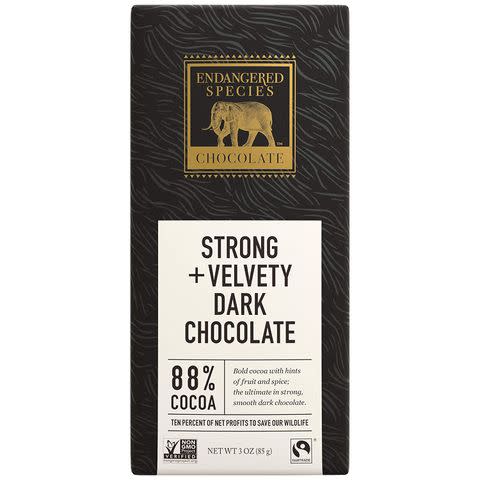
Milk Chocolate: Thanks to its sugar content, milk chocolate can flavor and sweeten the whipped-ganache frosting of a chocolate skillet cake as easily as it can dress up a batch of simple cream scones. An extra-high cacao percentage makes Endangered Species 48% one of the darkest milk chocolates around, and among my favorite milk chocolates for use in baking at home.
Callebaut Milk Chocolate Callets
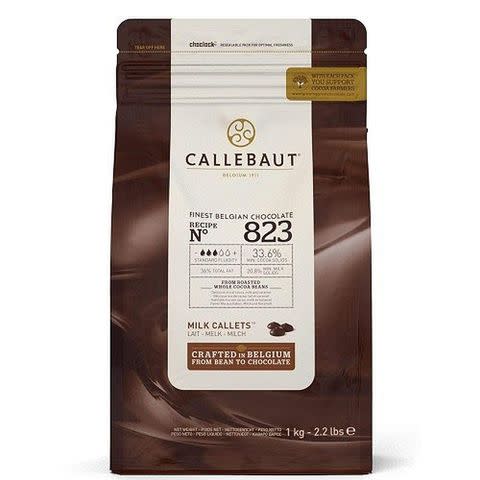
White Chocolate: Whether celebrated in white chocolate macadamia nut cookies or used as a stealthy stabilizer in basil mousse, white chocolate is far more useful than its detractors are willing to admit, furnishing a burst of sweetness and creamy vanilla flavor wherever it goes (especially with vanilla-forward blends like Green & Black's). For a more in-depth look, check out Max Falkowitz's excellent write-up on the real deal with white chocolate.
Valrhona Ivoire White Chocolate Feves, 1 Pound
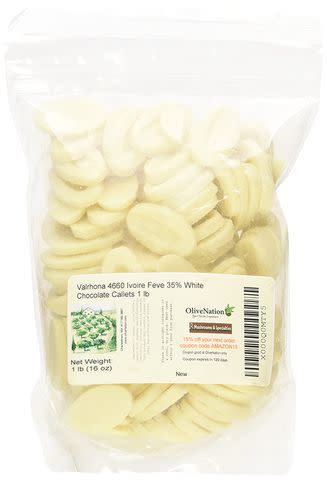
Cocoa Powder
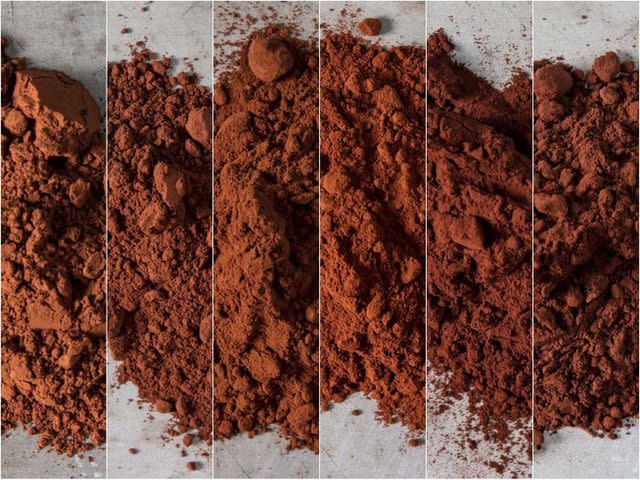
Serious Eats / Vicky Wasik
Cocoa powder is made from fermented, roasted, and ground cocoa beans that have been pressed to extract some or all of their natural fat content (cocoa butter). Because what's left behind is primarily dry plant matter, cocoa powder is very high in fiber and starch. That makes it a powerful thickening agent, but also one that can make baked goods seem chalky and dry.
To reduce costs, most supermarket brands are low-fat, which means more of their weight is composed of dry, starchy matter and not fat. So, while such cocoa is cheap and readily available, it's less flavorful and rich than premium brands that include a higher proportion of cocoa butter.
Dutch: This style of cocoa powder has an alkaline profile that gives it a darker, earthier flavor and color. Because it's a specialty product, the quality tends to be a little higher overall, giving most brands a deeper flavor. My favorite is Cacao Barry Extra Brute, which has twice the cocoa butter content of low-fat supermarket cocoas from more famous brands. I use it to make devil's food cake, brown-butter brownies, eggless chocolate mousse, dark-chocolate cookies, and homemade Oreos.
Cacao Barry Extra Brute Cocoa Powder (2.2 lbs)
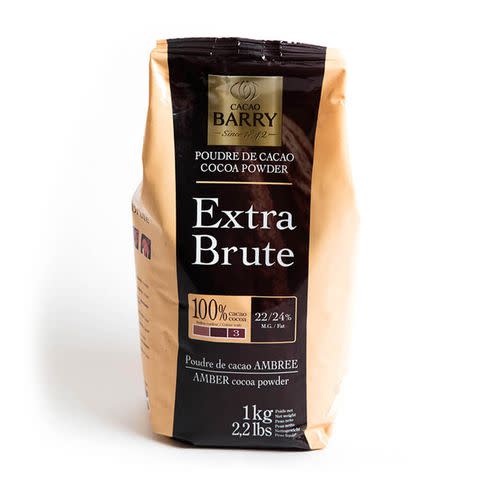
When a recipe calls for Dutch cocoa, be aware that blends made up of both Dutch and natural cocoa, like Special Dark or Saco, as well as specialty "black" cocoas, may not perform as well due to their nonstandard pH and low cocoa butter content.
Natural: This style of cocoa powder retains its naturally acidic profile, giving it a lighter color and flavor (one that tends toward the fruity end of the spectrum). Supermarket brands are almost universally low-fat, so their flavor tends to be weak and chalky due to their high starch content. Instead, shop online for flavorful, high-fat natural cocoa powders, like Callebaut. This style works beautifully for hot cocoa and Texas sheet cake, as well as any recipe that calls for plain cocoa.
GERBS Natural Cocoa Powder, 32 ounce bag
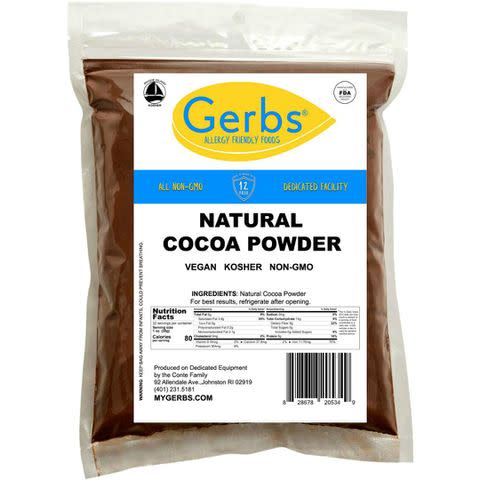
Coconut Milk
In most baked goods, milk's primary role is to provide hydration (which is why it's generally fine to bake with skim milk). By extension, the mild blend of water and fat in coconut milk makes it a great substitute for dairy in a pinch. Plus, it's delicious in recipes like coconut layer cake (among many, many other uses, such as Max's vegan ice cream). I most often find myself buying packs of full-fat Thai Kitchen, although many other excellent brands can be found in stores.
Thai Kitchen Organic Unsweetened Coconut Milk, 13.66 Fl Oz (Pack of 6)
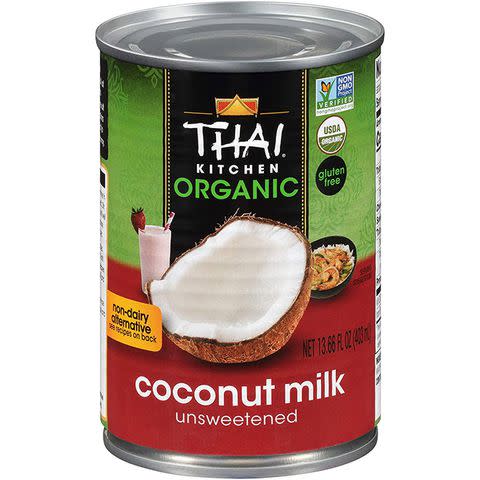
Coconut Oil
Because it's solid at room temperature, coconut oil can be used much like butter, although it's far richer. That makes it a phenomenal addition to recipes that are otherwise prone to dryness, like sugar cookies. Because it has a melting point below body temperature (around 76°F/24°C), it gives baked goods and fried foods a melt-in-your-mouth richness, rather than a greasy sensation of eating liquid oil. Keeping coconut oil on hand means that even if you run out of butter, you can still whip up a batch of chocolate chip cookies, banana bread, or scones.
Refined Coconut Oil: This style has no odor or flavor whatsoever and a high smoke point, making it my favorite neutral oil for frying doughnuts and cannoli. It can also lower the melting point of chocolate, making it a versatile oil for frozen treats like stracciatella or even homemade Klondike Bars. This is the type I use most often, so I prefer to buy in bulk from brands like Nutiva; for the casual baker, smaller jars may be more convenient.
Nutiva Organic Steam-Refined Coconut Oil, 15 Fluid Ounce
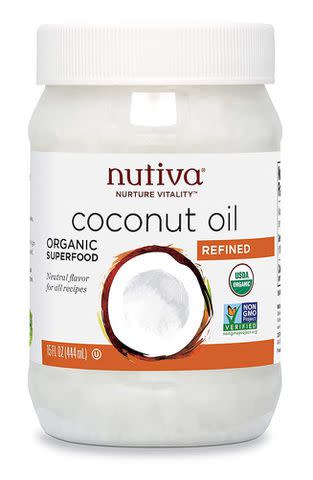
Virgin Coconut Oil: This style of coconut oil has a strong coconut flavor and aroma, as well as a low smoke point, making it somewhat less versatile overall—but infinitely more delicious. The intensity of flavor can vary from brand to brand. My favorite is Vita Coco.
Vita Coco Organic Cold Pressed Extra Virgin Coconut Oil - 14 oz.
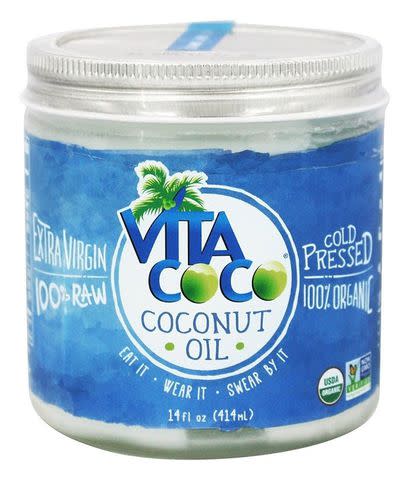
Cornmeal
Even if you don't make cornbread as often as I do, cornmeal is an essential for dusting pizza peels and trays of English muffins, and is often used in many styles of cookie and cake. My favorite comes from nearby Weisenberger Mills in Kentucky, but excellent options, like Great River and Palmetto Farms, abound online.
Great River Organic Milling Corn Meal, Stone Ground, Organic, Non-GMO, 25 Pounds
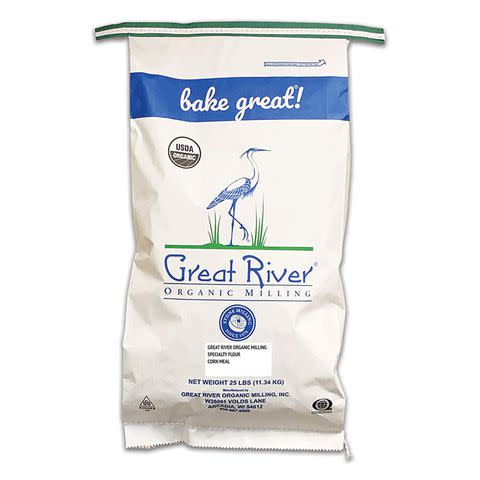
Cream of Tartar
This powdered acid is a by-product of the winemaking process, and a convenient way to adjust the pH of any recipe that needs a hint of acidity (whether for flavor or for leavening). Acids like lemon juice and cider vinegar can play a similar role, but often add a subtle flavor, as opposed to cream of tartar's more neutral profile. I use it to offset the sweetness of Swiss buttercream, to stabilize homemade pancake syrup, and to assist in leavening whole wheat crackers.
Extracts and Flavorings
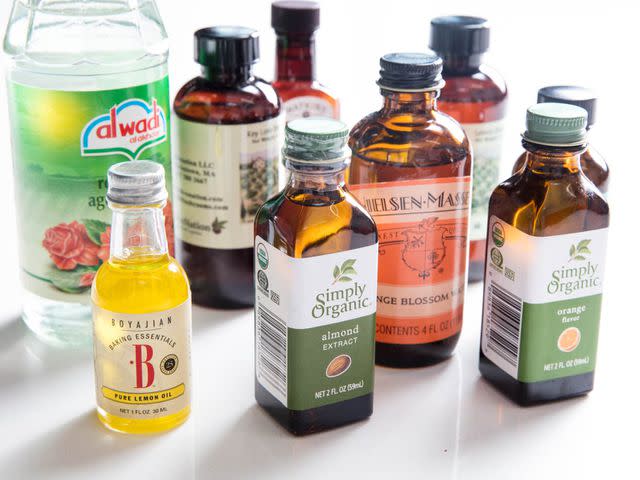
Serious Eats / Vicky Wasik
For dressing up a basic buttercream, amping up a cake batter, or customizing a batch of ice cream base, nothing beats a good-quality extract or aromatic flower water.
What flavors you keep on hand will largely depend on your own personal style, but my pantry is always well supplied with extracts like almond (to add a certain je ne sais quois to Swiss buttercream), mint (lovely for turning stracciatella gelato into mint chip), and lemon (perfect in sour cream pound cake), as well as flower waters like orange and rose. The former is key in kanafeh, and the latter works beautifully with roasted strawberries and DIY Strawberry Shortcake Bars.
Singing Dog Vanilla Pure Vanilla Extract, 2 Fluid Ounces
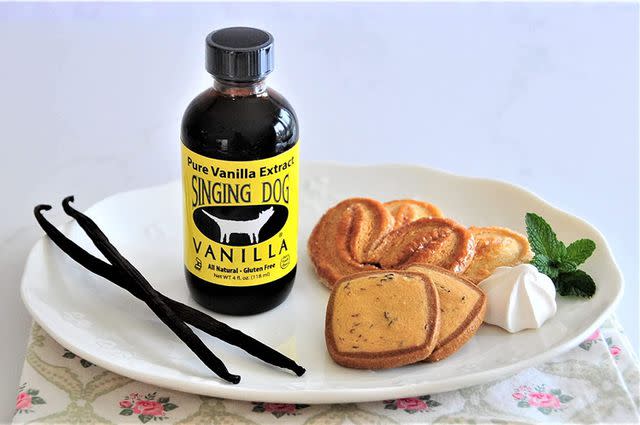
Mymoune Orange Blossom Water
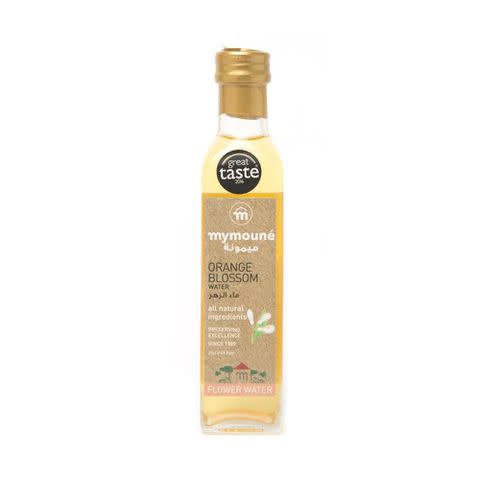
Flour
Flour is the backbone of baking and pastry, so it's vital to choose the right type for each project. That choice should be based on whether or not a flour's composition and behavior suit a given recipe; high-protein flours facilitate gluten development, which can spell disaster for fluffy cakes, tender cookies, and crispy pie crust, while starchy, low-protein flours lack the structure needed for chewy breads (or even chewy brownies).
All-Purpose Flour: The specific composition and behavior of all-purpose flour can vary wildly from brand to brand, depending on what type or types of wheat are used. Some brands, like White Lily, use 100% soft white wheat, for a starchy, low-protein profile similar to that of cake flour. Other brands, like King Arthur, use 100% hard red wheat, for a high-protein product similar to bread flour.
If you can excuse the redundancies of this declaration: I believe the purpose of all-purpose flour is to be a flour that's suitable for all purposes. For that reason, I avoid brands with extreme formulations at one end of the spectrum or the other. My favorite is Gold Medal's Blue Label, a blend of red and white wheat that provides a well-balanced mix of protein and starch ideal for a wide range of recipes, from light and tender pie dough and fluffy sweet potato biscuits to chewy ricotta cookies and crispy cannoli.
Gold Medal Unbleached All-Purpose Flour
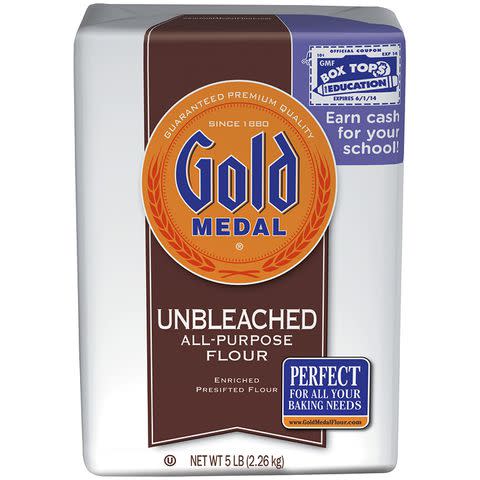
Bread Flour: In a pinch, a good all-purpose flour will work for a pan of cinnamon rolls, but for bakers with a strong interest in crusty loaves, chewy bagels, and pizza, it's worth keeping a bag of bread flour on hand, such as King Arthur.
Cake Flour: American cake flour has been chlorinated for more than 100 years, a process that enabled the evolution of those high-rising, airy cakes we love today (think cake mix and supermarket sheet cake). Cake flour starts with 100% soft white wheat; chlorination alters its starch and protein behavior, as well as its pH, changes that allow for lighter, fluffier, and more tender cakes than unbleached alternatives can yield. For those interested in a deeper look at the process of chlorination and its effects, I've written an article about the behavioral difference of bleached cake flour, including side-by-side comparison shots.
I don't use this type of flour for every cake—a blended all-purpose flour is great for heartier options, like carrot, chocolate, gingerbread, and even chiffon—but for bakers who love an exceedingly fluffy cake, it's a make-or-break ingredient. I call for it in recipes like angel food and pumpkin spice cake, as well as my strawberry cake, blackberry cake, and homemade Lofthouse cookies (which are basically cake in cookie form).
My favorite brand is Swans Down, but brands like Softasilk work well, too.
Swans Down Cake Flour
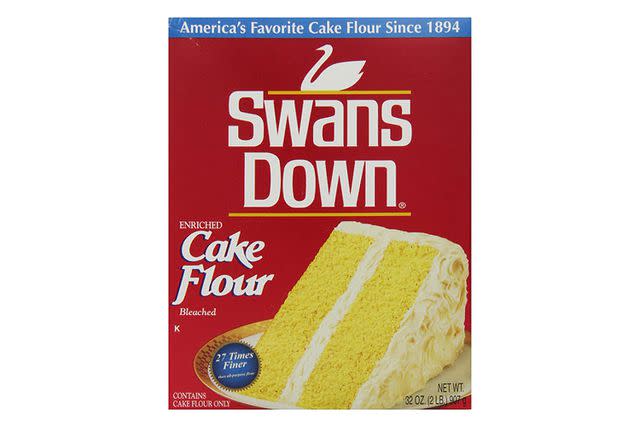
Whole Wheat Flour: For those who don't bake on the regular, it may not be useful to keep whole wheat flour on hand, but its hearty texture and flavor are a welcome addition to carrot cake, gingerbread, and flaky pie dough, as well as snacks and crackers like homemade Wheat Thins and Carr's-style whole wheat crackers.
King Arthur Premium 100% Whole Wheat Flour
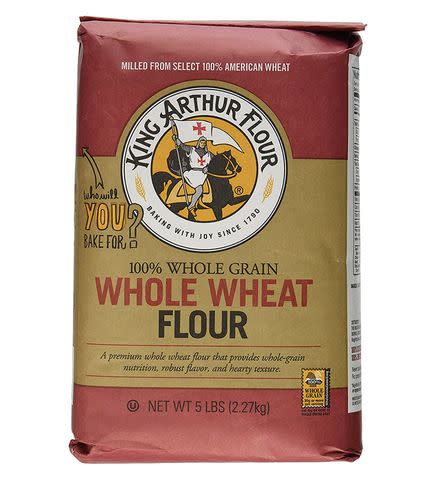
There are many excellent regional mills producing delicious whole wheat flour, but bear in mind that how a flour is ground can affect its absorbency and necessitate adjustments to the liquid content of a recipe. For that reason, my go-to national brand for whole wheat flour is King Arthur, which is both flavorful and finely milled.
Freeze-Dried Fruit
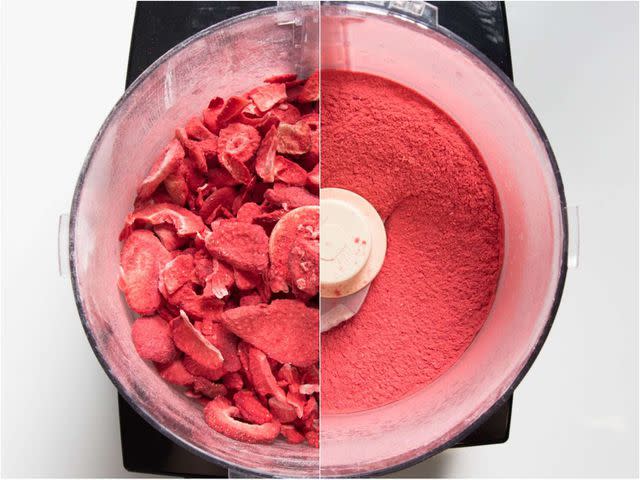
Serious Eats / Vicky Wasik
Freeze-dried fruit is made by removing the ice from frozen fruit through sublimation, a process that involves ultra-low temperatures and a vacuum chamber. This gives it a texture that's distinctly crunchy and dry, while preserving its vibrant color and taste.
Ground into a fine powder, freeze-dried fruit serves as a concentrated source of flavor in recipes like whipped cream, buttercream frosting, no-bake cheesecake, and strawberry shortcake bars, where frozen fruit would only create a soupy mess. Many supermarkets, including Whole Foods, Kroger, Trader Joe's, and Fresh Market, carry their own house brands, while specialty brands are easy to order online.
Mother Earth Freeze Dried Raspberries, 3 oz
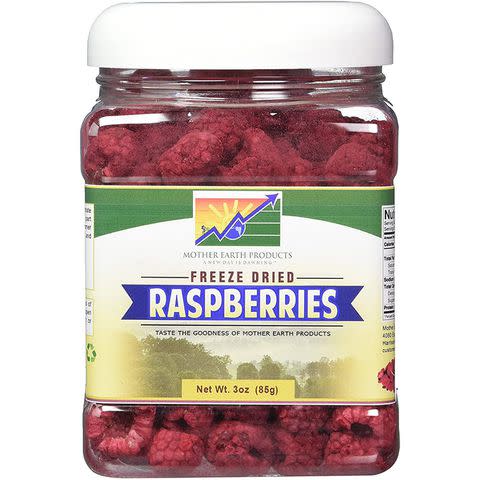
Natierra Nature's Organic Freeze-Dried Strawberries, 1.2 Ounce (Pack of 3)
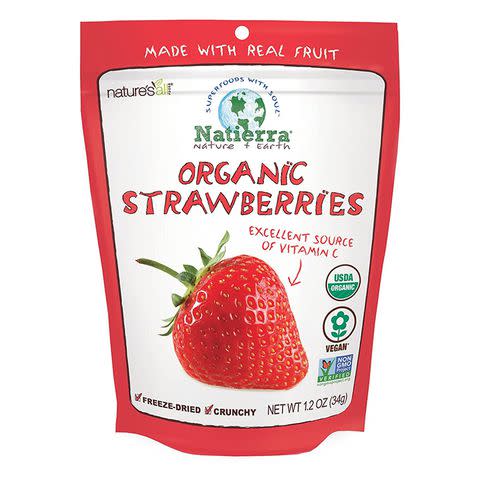
Gelatin Powder
If you can imagine the difference between a wobbly, crystal-clear cube of lemon Jell-O and a creamy, opaque slice of lemon meringue pie, then you can intuitively grasp the visual and textural differences between thickening something with gelatin and thickening it with starch.
Unlike starch, an absorbent material that comes from plants, gelatin is protein extracted from animal sources. Compared with starch, it thickens at much lower temperatures and works not by absorbing liquid but by entrapping it. When gelatin melts into a warm liquid, little molecules of protein are dispersed throughout. As the liquid cools below 100°F (38°C), those molecules begin to interlink, reorganizing themselves into a three-dimensional net, with water caught inside.
This reduces a dessert's ability to flow, creating a relatively firm but delicate texture even in desserts with a high proportion of liquid ingredients, like panna cotta, mousse, and homemade Cool Whip.
Powdered gelatin is the most widely available form of gelatin in America, so it's what I've always used at home and at work, even in my restaurant days. In the US, the bloom strength of powdered gelatin is consistent from brand to brand, and its granular form is easy to scale out one gram at a time—two major advantages over sheet gelatin, which comes in fixed sheet weights of variable bloom strength.
Most brands of supermarket gelatin come from pork and are packaged in quarter-ounce envelopes. Because I'm allergic to pork, and find ripping open a thousand packets somewhat tedious, I buy bovine gelatin in bulk online from brands like Now Foods.
Now Foods Beef Gelatin Powder (1lb)
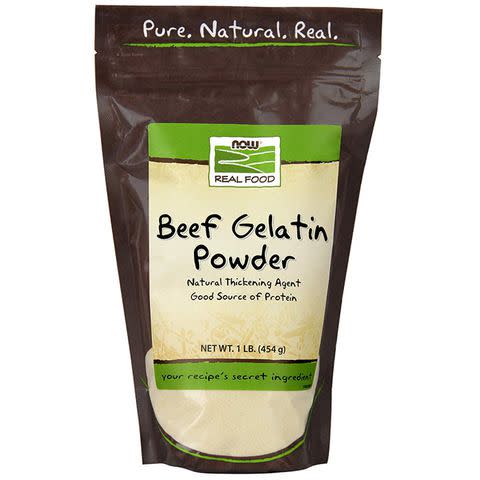
Gelatin's behavior is highly sensitive to factors like temperature and time, as well as tiny fluctuations in measurement, so it's worth reading up on the unexpected variables that can cause gelatin to misbehave. It's also worth mentioning that there is no easy one-to-one substitute for gelatin—other types of thickeners, whether starch or agar, will require reformulating a recipe from the ground up.
Instant Dry Yeast
Dry yeast is a granular powder made from millions of single-celled organisms held in a sort of suspended animation, thanks to dehydration. When rehydrated, they come back to life and immediately begin feeding on whatever sugar or starch they can find. The by-product of their feeding frenzy is alcohol and carbon dioxide, which give bread its fermented flavor and airy rise.
Successfully resurrecting dry yeast will depend entirely on how it was processed, so when a recipe calls for a certain type, the directions will be tailored to its specific needs and may kill a different type—or else fail to provide the conditions needed for it to thrive. Using the wrong type of yeast can result in a poor rise, or none at all.
At Serious Eats, we use plain instant yeast, like SAF Red Label, because it's more stable than active dry yeast and more vigorous in the long term than RapidRise or other fast-acting styles. For more information, read up on the differences between active dry, instant dry, and fast-acting instant yeast.
SAF Instant Yeast
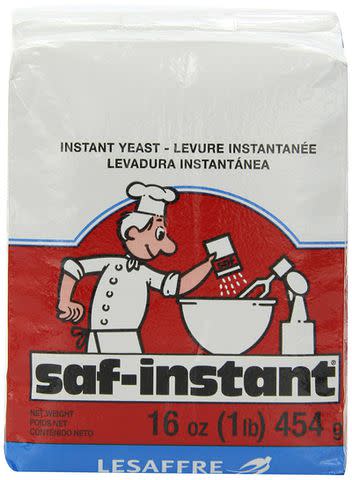
Instant Espresso
Even if you don't care for a frappé, it's worth keeping instant espresso on hand to flavor custards, cakes, frostings, and whipped cream, and to use as an aroma booster in chocolate desserts. Because it's made from freeze- or spray-dried espresso, it will fully dissolve in any liquid and leave your desserts free of any trace of grit. I use Medaglia d'Oro at home and work.
Medaglia D'Oro Instant Espresso
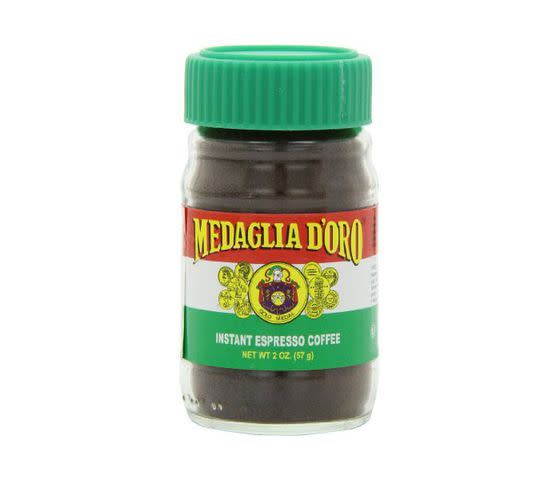
Liquid Sugar
Granulated sugar is the most common sweetener in American dessert, but thick liquid sugars can play a vital role in many recipes, particularly candies and frozen desserts. Many of them, of course, also serve as a flavorful sweetener to accompany tea (honey), waffles (maple syrup), or cornbread (molasses). Not every baker will keep every type on hand, but these are the liquid sugars I use most often.
Corn Syrup: Don't confuse this pantry staple with its industrial counterpart, high-fructose corn syrup. The simple supermarket stuff contains less fructose than natural sweeteners like honey or agave. Thanks to its neutral color, flavor, and pH, light corn syrup (not to be confused with "lite" corn syrup) is my go-to for recipes that require a liquid sugar.
Karo Syrup is the most readily available in supermarkets, and its squeeze-bottle format can't be beat, but I don't mind dealing with jars of Golden Barrel because it contains no added vanilla, giving it a more neutral flavor. I use it in most of the candies from my cookbook, while here on Serious Eats, Max Falkowitz calls for it for making ice cream and sorbet.
Karo Light Corn Syrup With Real Vanilla, 32 Ounce Bottle
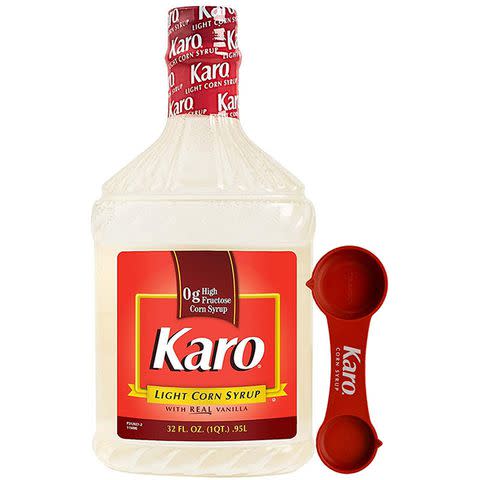
Golden Syrup: Made from sugarcane, golden syrup has a light and delicate molasses flavor that's so faint, it almost tastes like butterscotch instead. For those allergic to corn, it offers a reliable alternative to corn syrup in virtually all instances (although it may throw off some of a recipe's visual cues). Aside from its role as a corn syrup substitute, golden syrup is a key ingredient in homemade Oreos, DIY cookie butter, and crispy chocolate popcorn. My favorite brand is Lyle's.
Lyle's Golden Syrup
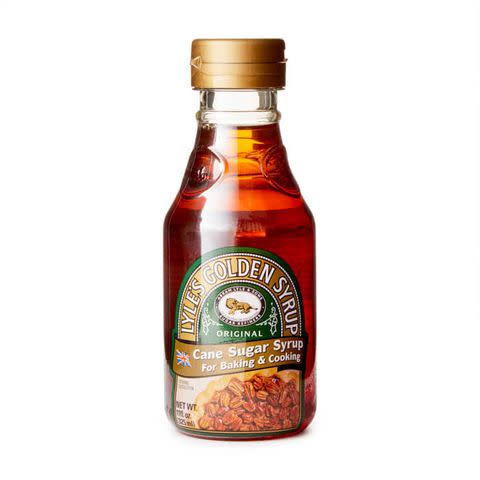
Honey: The best honey is local honey, so head to the farmers market and pick up a jar of the good stuff; you'll be rewarded with an intensity of flavor that will make semifreddo, fried chicken, and cranachan all the more delicious. Take care when using honey as a replacement for corn syrup, as it will foam more vigorously when boiled (necessitating a larger pot) and burn at lower temperatures.
Maple Syrup: If used on nothing but waffles and French toast, maple syrup would more than earn its keep in my pantry—although it's great in savory dishes, like roasted Brussels sprouts and sweet potatoes, too.
Malted Barley Syrup: Barley malt is a common ingredient in commercial cookies and bread, as its earthy sweetness lends a pleasant, toasty complexity to baked goods. It's a traditional component in bagels and a fun addition to chocolate chip cookies, too. At home, I use Eden brand, which is readily available in most major supermarkets and online.
Eden Foods Malt Barley Syrup Organic, 20-Ounce
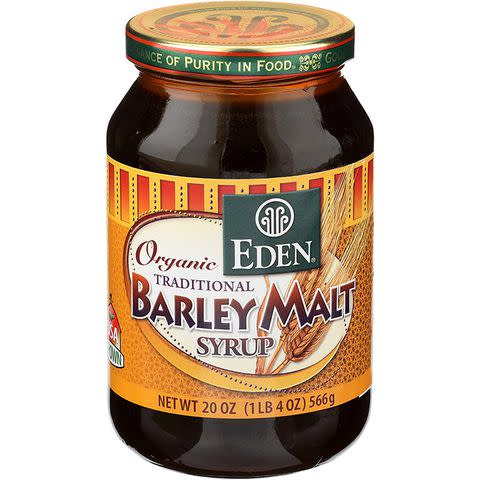
Molasses: Plain molasses is like olive oil in that the earliest extractions are the lightest and most delicate; later extractions become increasingly bold, ending with blackstrap,* which is comparatively bitter, salty, and intense. As a Kentucky girl, I tend to favor local mills (especially for sorghum), but among national brands I prefer Golden Barrel molasses over typical supermarket alternatives.
Muddy Pond Sorghum Sorghum Syrup
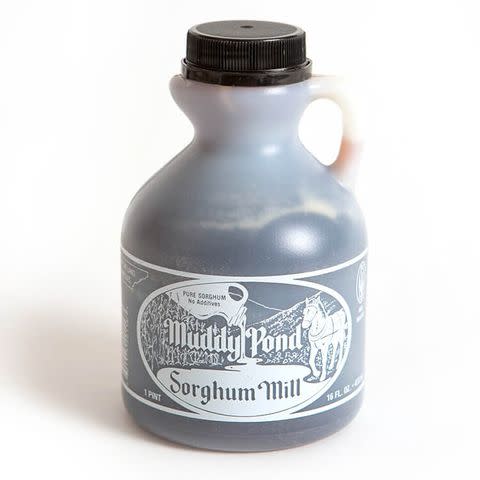
Buy at Store.muddypondsorghum.net
The bittersweet flavor of molasses pairs brilliantly with spices, especially ginger, so I use it most often in recipes like gingerbread, gingersnaps, and ginger lemon cremes. As with honey, molasses will foam more and burn at a lower temperature than corn syrup, so take care when using it as a substitute.
*Please note that unless a recipe calls for blackstrap by name, using it in place of plain molasses may alter the pH, sodium content, flavor, and texture of baked goods in unexpected ways. For more information, read up on the differences between plain and blackstrap molasses.
Kosher Salt
Because the weight-to-volume ratio of salt can differ significantly by type and brand, it's important that volume measurements for salt include details on what brand was used. To keep the volume measurements for salt consistent across the site, all of us at Serious Eats use Diamond Crystal kosher salt in our recipe development. For more information on that, see Kenji's excellent article on different types of kosher salt.
As a pastry chef, I have a special appreciation for Diamond Crystal, as it's one of the few brands, kosher or otherwise, that are 100% pure and free of anti-caking agents, like sodium ferrocyanide (a.k.a. yellow prussiate of soda), which can cause candies like fudge, caramel, and toffee to crystallize.
Diamond Crystal Kosher Salt, 3-Pound Box
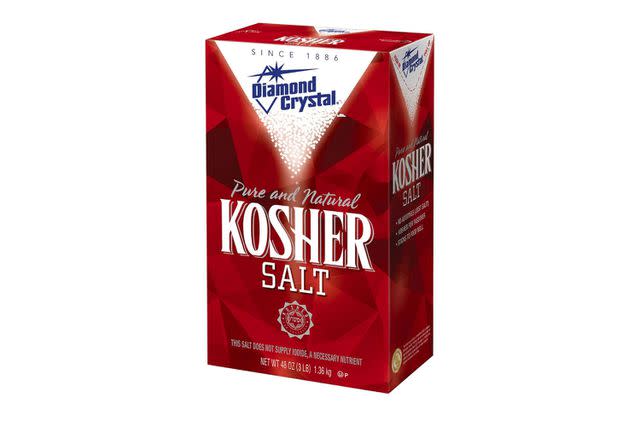
Malted Milk Powder
It may be sitting on supermarket shelves next to the hot-cocoa mix, but those canisters of Carnation are so much more than a kid's drink. With an alkalized mix of dry malt extract and powdered milk, this unassuming powder is the umami bomb of dessert, deepening the flavor of almost any recipe with subtle notes of toffee and malt.
I use it in homemade brownie mix, chocolate chip skillet cookies, Texas sheet cake, and butterscotch pudding, among many, many other recipes. For those who reach for it as often as I do, it's a smart move to buy in bulk from brands like Hoosier Hill Farm.
Hoosier Hill Farm Old-fashioned Malted Milk Powder, 1.5 lbs.
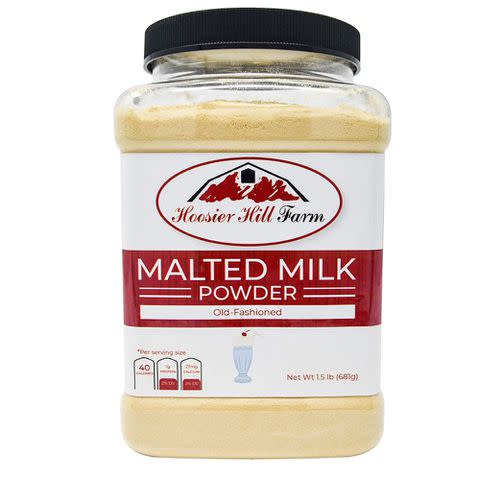
Nuts, Seeds, and Dried Fruit
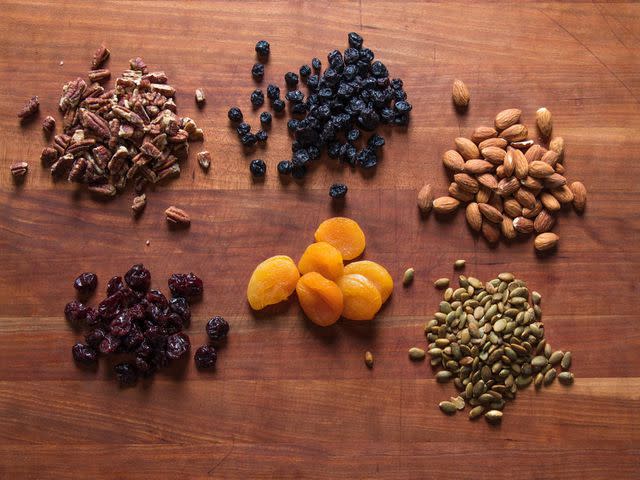
For adding texture to cookies, coffee cake, streusels, and granola, as well as simple snacking, I always keep a supply of fruits and nuts on hand. I find dried cherries, dried blueberries, and dried Black Mission figs, along with almonds, pecans, and pumpkin seeds, to be the most versatile, but use what makes sense for your style.
Oats
Whether you're making homemade buttermilk granola, oatmeal cookies, or pumpkin streusel muffins, old-fashioned rolled oats are a baker's best friend. Be aware that alternative styles, like instant or thick-cut, may not behave the same way, so use with caution.
Nature’s Path Original Whole Rolled Oats, 18 Ounces (Pack of 6)
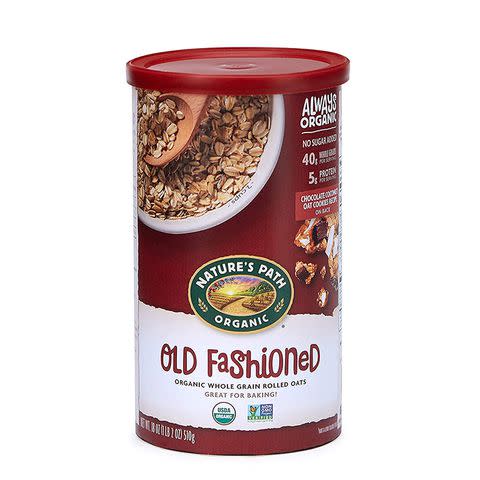
Peanut Butter
I doubt this pantry staple requires any explanation, as many of us keep it on hand for sandwiches and snacks already. Thanks to its thick texture and high fat content, peanut butter can supplement or take the place of butter in many recipes. I love it in PB&J sandwich cookies, peanut butter frosting, or even just swirled into classic brownies. Because I live just a few miles from the Jif factory in Lexington, Kentucky, I'm a bit partial to that brand, but Skippy is a go-to for me as well.
Natural and organic brands tend to have a coarser grind and less emulsified texture, so they aren't well suited to custards and frostings, but they can generally be used interchangeably in cookies (although they tend to increase spread).
Spices
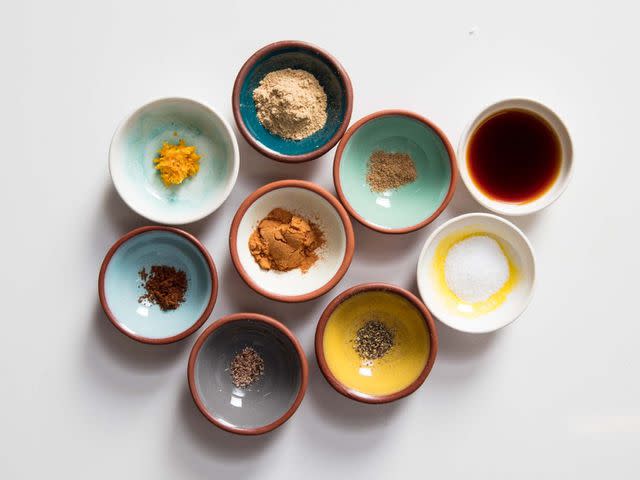
Serious Eats / Vicky Wasik
As with extracts, it's hard to stock someone else's spice cabinet without knowing their baking style. But if I could keep only six spices on hand, I could get by with ground cardamom, ground cinnamon, ground cloves, ground coriander, ground ginger, and whole nutmeg.
Aside from their role in overtly spiced desserts, like gingerbread, many of these spices share a similar chemical composition with other common flavor compounds, allowing for strategic pairings that can amplify the overall flavor and aroma in a dessert. For example, coriander has an affinity for blueberries that makes it a smart addition in muffins and pie, while cloves can enhance the aroma of banana bread and cardamom enhances the fruitiness of a pear galette.
Sugar
In any given recipe, sugar directly or indirectly controls spread, rise, browning, aeration, and gluten development, as well as peripheral properties such as moisture retention, freezing point, and shelf life, in addition to its role in protecting eggs from scrambling, dairy from curdling, and starch from premature thermal hydrolysis. Which is all to say: I consider sweetness to be sugar's least important attribute.
White Sugar: Whether sourced from beets or sugarcane, refined** white sugar is 99.9% sucrose, so it behaves the same in virtually all recipes developed for the home cook, whether caramel or boiled fudge. The biggest difference is that refined cane sugar tends to be superfine, giving it smaller crystals that melt, caramelize, and dissolve more readily than plain granulated sugar (regardless of source).
Even so, I tend to buy plain granulated sugar rather than superfine, because I don't find those benefits to be worth the added expense. I use both beet and cane sugar on a regular basis and have developed no preference between the two. Whatever type you pick up, try toasting sugar to reduce its overall sweetness and add complexity of flavor without altering its behavioral properties.
** Because organic sugar is only semi-refined, it still contains a portion of its natural molasses content, so it can behave differently in some baked goods thanks to its slightly more acidic pH. Organic sugar cannot be toasted.
Brown Sugar: Modern brown sugar is made by adding molasses to refined white sugar, and because the exact amount and quality of that molasses can vary from brand to brand, I tend to be a bit more particular with it than I am with white sugar. My local supermarket (Kroger) makes a very nice light brown sugar, but when in doubt I default to Domino.
I bake with light brown sugar because I love the mild color and flavor it lends to desserts like oatmeal cookie ice cream and whipped cream; when I want something more intense, I'd rather reach for straight molasses and adjust the recipe to taste. Organic brown sugar is not as refined, with many brands having a substantially coarser texture and more acidic pH, differences that may require special handling in some recipes. Brown sugar cannot be toasted.
Powdered Sugar: Because powdered sugar is most often used in raw applications, the differences between organic and conventional powdered sugar are less likely to impact the overall results of a recipe, but the flavor and texture of the molasses fraction of organic powdered sugar can offer some major benefits to bakers who aren't too keen on the taste of powdered sugar generally. Whether dusting lemon meltaways or whipping up homemade Oreo filling, I grab organic powdered sugar from Kroger, or buy it from Wholesome when ordering online.
Wholesome Sweeteners Organic Powdered Sugar (16 oz)
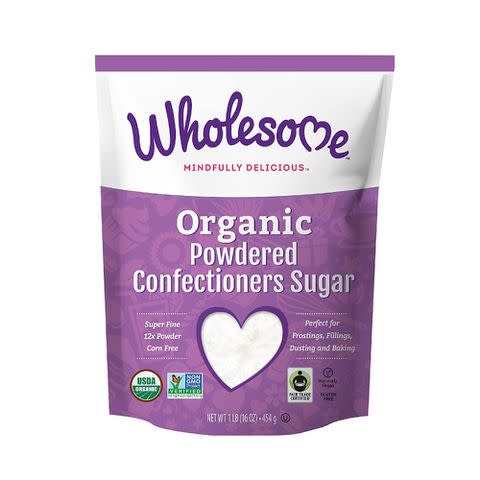
Raw Sugar: Processing methods differ from country to country, so the flavor of raw sugar can range from mellow and butterscotch-y to smoky and dark, profiles that can play brilliantly with all manner of desserts. Max Falkowitz has written up an excellent guide to raw sugar that can help you determine what sort of raw sugar you might like to try from the wide range out there.
Exercise caution if you're trying out raw sugar in a recipe that doesn't call for it by name: Its unique pH and fructose/mineral content may produce nonstandard results when used in place of refined white sugar in baked goods and boiled custards. But in no-cook or low-heat recipes, as well as those in which the sugar is dissolved in eggs or cream, raw sugar can allow for some great variations. Try palm sugar or jaggery in mango and pineapple syrup, Swiss buttercream, or even whipped Greek yogurt.
Generally speaking, darker types of raw sugar, like piloncillo and gula jawa, are best used as substitutes for brown sugar rather than white, such as when you're making cinnamon rolls or pumpkin pie. Raw sugar cannot be toasted.
Starch
Starches are plant-based polysaccharides that are soluble when heated in water, a process that eventually causes the starch cells to swell and burst, thereby thickening a liquid by increasing its viscosity. A starch's thickening power, along with the temperature at which it activates, depends entirely on what plant it was derived from. Beyond that, those factors (along with the temperature at which a starch breaks down) will also be influenced by the amount of sugar in a recipe, so the behaviors we understand in a sauce or roux will totally fly out the window when it comes to dessert.
Cornstarch: With its high gelatinization point and capacity for thickening, as well as its affinity for dairy, cornstarch is ideal for boiled custards, like those used in fior di latte gelato and German buttercream. I buy Argo brand, because I'll take its resealable canisters over a flimsy box any day. As a grain-based starch, cornstarch cannot be used as a one-to-one replacement for any root-based starch, such as tapioca.
Tapioca Starch: Tapioca starch has a relatively low gelatinization point and produces a crystal-clear gel, so it's my go-to thickener for fruit pies, like cherry, blueberry, and apple. Its lower gelatinization point also makes it superior to cornstarch in many baked goods, such as alfajores.
When combined with dairy, tapioca starch can result in an unpleasantly slimy texture, so it's generally to be avoided in recipes that call for milk or cream. My favorite brand is Bob's Red Mill, thanks to its consistent sourcing. (Some budget brands may use sago as a replacement for tapioca, which can wreak havoc on pie.) As a root-based starch—tapioca is derived from cassava—it cannot be used as a one-to-one replacement for any grain-based starch.
Vanilla
In dessert, vanilla is nearly as ubiquitous as sugar or salt, an ever-present seasoning that can elevate the flavor and aroma of almost anything. That means I'm constantly on the prowl for new contenders, and I've reviewed many brands in the past. But I find myself reaching for Watkins most often, mainly due to its large bottle size and easy-pour spout. Below you can find a few more of my favorites.
Singing Dog Vanilla Pure Vanilla Extract, 2 Fluid Ounces

Nielsen-Massey Madagascar Bourbon Pure Vanilla Extract

How to Store Baking Ingredients
The temperature in my kitchen ranges from 65 to 75°F (18 to 24°C) depending on the season, a temperature zone that presents no problem for any of these ingredients. Problems can arise, however, when pantry temperatures are consistently warmer than 75°F throughout the year, which can shorten the shelf life of ingredients that are already prone to rancidity—such as nuts, whole wheat flour, and wheat germ—or those prone to melt, like chocolate and coconut oil. In such conditions, these ingredients will benefit from refrigeration, though they should be returned to about 70°F (21°C) prior to use.
If pantry temperatures surpass 75°F only for a month in the summer, all but the meltable ingredients, like chocolate and coconut oil, will be fine in the short term. Ultimately, shelf life is a product of temperature and time, so items that are used and replaced regularly are less likely to suffer from poor storage conditions compared with bulk items (such as a five-pound bag of walnuts), which may require more staying power to last until they're used up.
All pantry items are best stored away from light, so those with open-shelf kitchen cabinets should use opaque containers if the original packaging is translucent.

